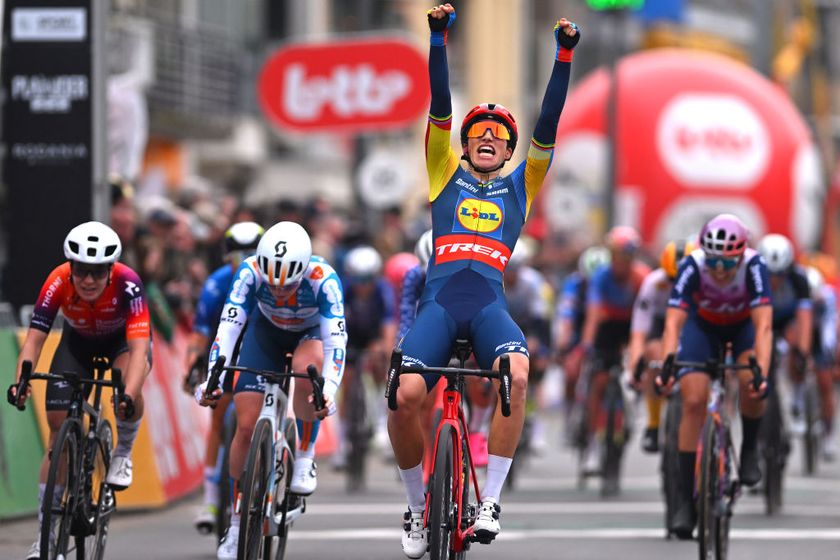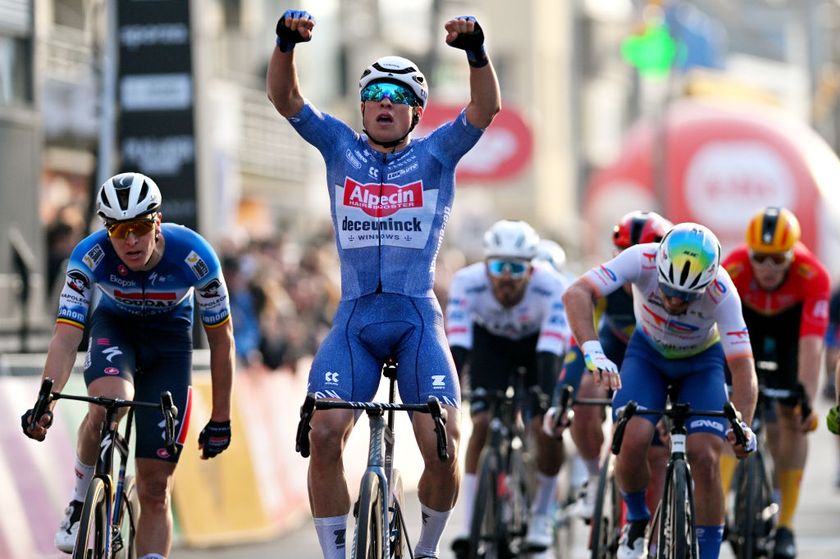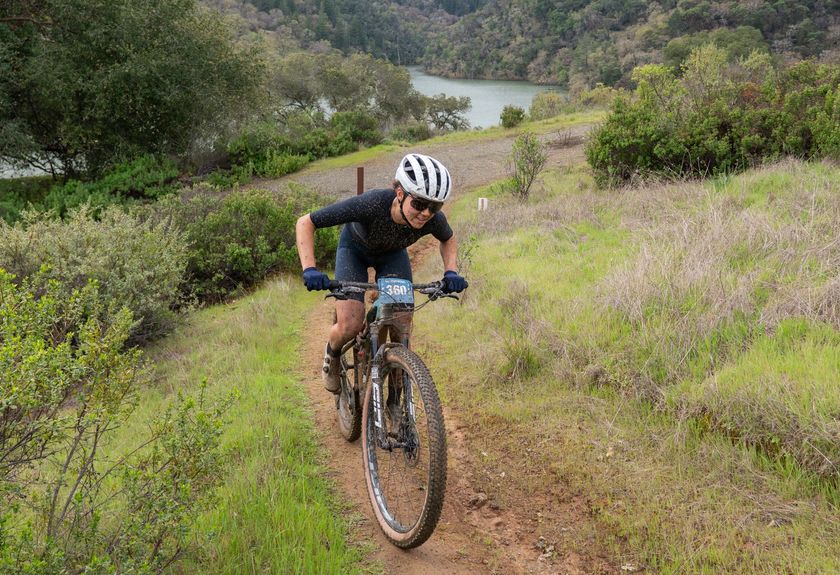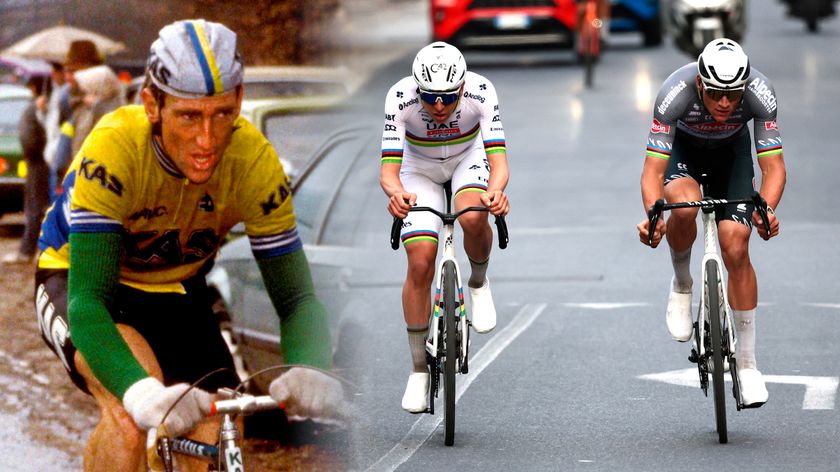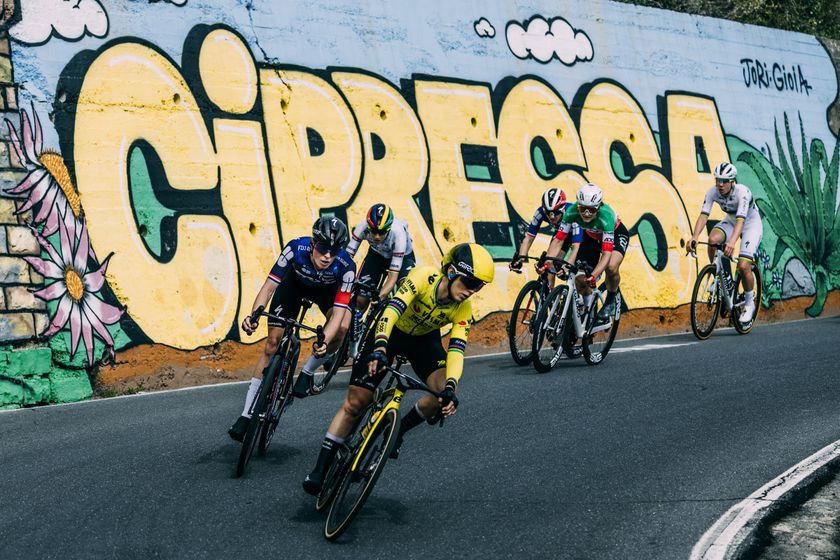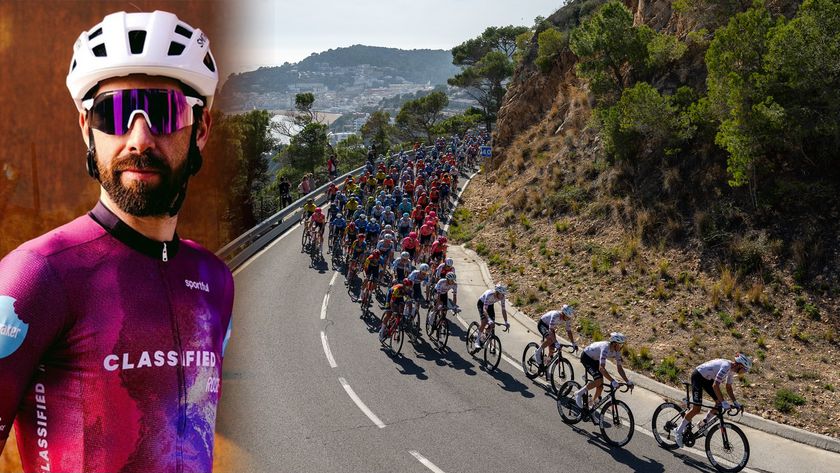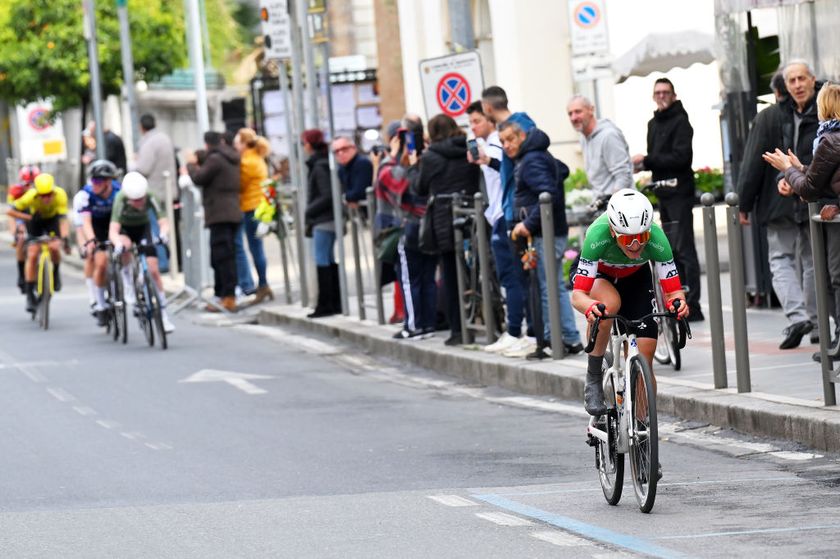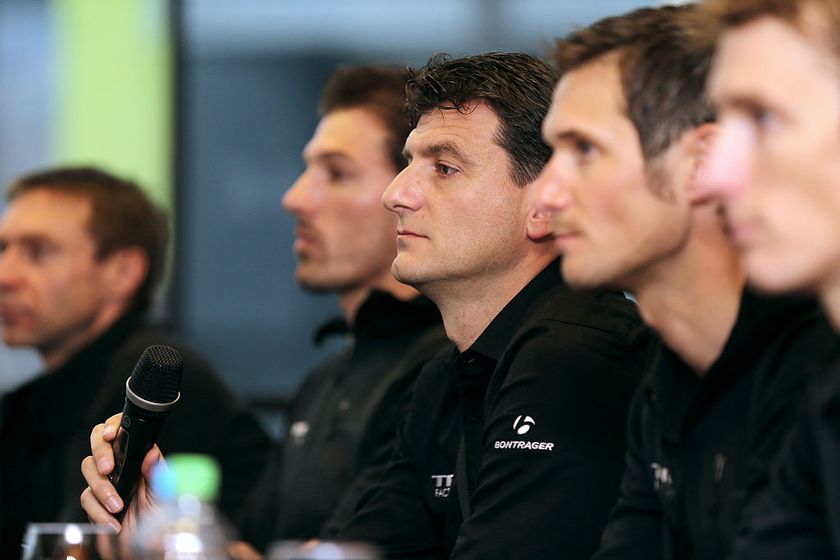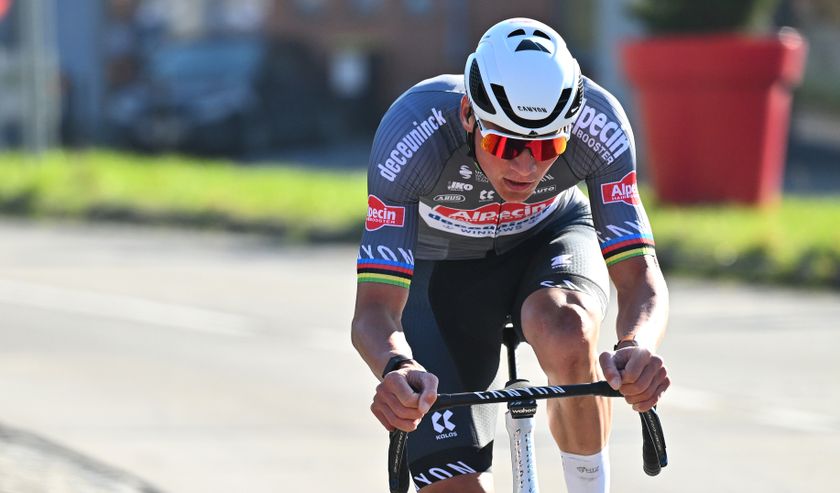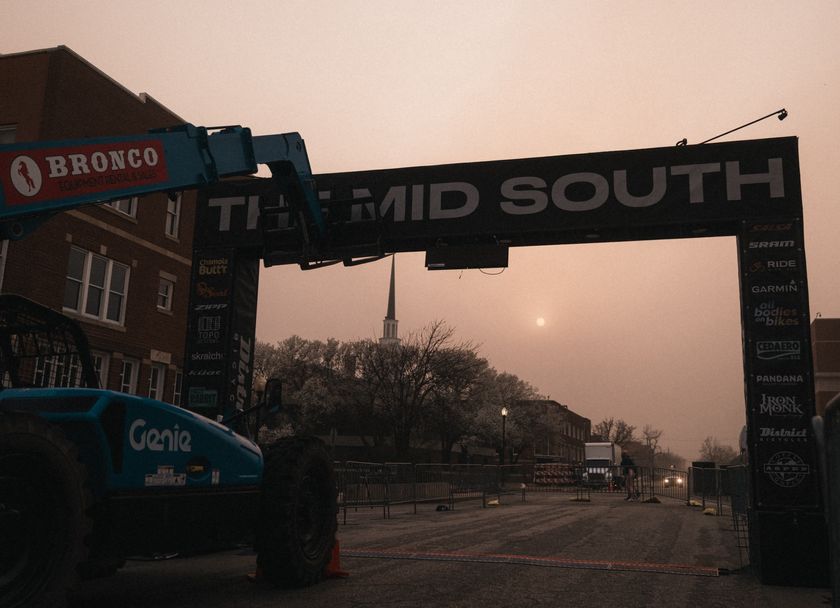Not over yet: Roglic takes command but Giro d’Italia still in opening phase
Nibali the closest challenger, while Simon Yates must go on offensive





In 1997, the last time the Giro d’Italia featured a time trial to San Marino, defending champion Pavel Tonkov won the stage to move into the maglia rosa. Marco Pantani, his most touted challenger, could only manage a distant 11th and even then, just three stages in, it seemed difficult to imagine anyone other than Tonkov in pink in Milan.
Matt White’s stage-by-stage guide to the Giro d’Italia
Giro d'Italia time trial 'a bit of a stinker' for Simon Yates
'No explanation' for Yates time trial defeat in Giro d'Italia, says White
Nibali: Too early to say Giro d'Italia is a duel with Roglic
Roglic: The Giro d'Italia isn't over until the finish line in Verona
Ten years earlier, another defending champion, Roberto Visentini, claimed an emphatic victory in the time trial from Rimini to San Marino. That sparkling performance saw him inherit the pink jersey from his teammate Stephen Roche and – so it seemed – settle the thorny issue of leadership of the Carrera squad once and for all.
The San Marino time trial, once a staple of the Giro route, made its return after 21 years on Sunday and, by the end, it felt as though the sea-to-sky test had never been away. A steady grind rather than a full-blown mountain time trial, it has historically rewarded the strongest rider at that point in the race, and so it proved once again.
Primoz Roglic (Jumbo-Visma) is the man of the moment – a stunningly long moment that has now endured since the UAE Tour in February – and, as expected, the Slovenian was a dominant victor of the 34km test. It may have required a mechanical mishap from Victor Campenaerts to ensure he claimed the stage, but his superiority over his general classification rivals brooked no argument.
The pink jersey contenders set out in dismally wet conditions (Campenaerts, an early starter, enjoyed dry roads), and Roglic was the best of them in all three phases of the stage. He was already 26 seconds quicker than Vincenzo Nibali (Bahrain-Merida) on the early run along the coast and then tacked on another 12 seconds in the second third. Tellingly, he was all of 27 seconds faster than Nibali on the 12km climb to towards the finish.
It is a measure of Roglic’s strength that Nibali evinced such satisfaction at having limited his deficit to 1:04 on the stage. Nibali’s upbeat view was informed in part, of course, by the sheer scale of the losses incurred by two other rivals. After impressing in the short Bologna time trial last weekend, Simon Yates (Mitchelton-Scott) endured what he labelled “a stinker” here, losing 3:10 to Roglic, while Miguel Angel Lopez (Astana) coughed up 3:44.
Roglic is now second overall, 1:50 down on Valerio Conti (UAE Team Emirates), but a resounding leader of the ‘virtual’ ranking of pre-race favourites. Nibali is now 1:44 behind Roglic on GC, while Yates is already 3:46 down and Lopez is 4:29 back.
Get The Leadout Newsletter
The latest race content, interviews, features, reviews and expert buying guides, direct to your inbox!
Is the Giro over before it has even begun? Those time gaps and Roglic’s unnerving strength to this point might suggest as much, but the history tells us that it is never as simple as all that. If the remainder of the Giro were to be raced on Zwift, then one suspects Roglic would be nigh-on unbeatable, but the beauty of the corsa rosa comes in the sheer number of variables – meteorological, tactical, physical, emotional – that will tumble without into the contenders’ paths between here and Verona.
In 1997 and 1987, Tonkov and Visentini looked like Giro champions in waiting after the San Marino time trial, but both men found themselves outmanoeuvred unexpectedly after the Giro had reached its midway point and hit the mountains proper. Tonkov had to settle for second overall behind Ivan Gotti after the Italian conjured up a solo victory on the road to Cervinia. Visentini didn’t even finish the race after his teammate Roche seized pink from him on a day of peak polemica in Sappada.
So far, of course, Roglic has shown himself equipped to deal with just about everything, while his fourth place finish at last year’s Tour de France demonstrated that his prowess in the high mountains is almost on a par with his time trialling. There are no obvious weaknesses in his armoury and yet, this Giro feels far from over. How could it be, when the race has yet to climb above 746 metres in altitude?
Roglic has confirmed himself as the favourite – and then some – for overall victory, but he knows the biggest obstacles are still ahead.
A two-way tussle?
On the eve of the time trial, Bahrain-Merida coach Paolo Slongo estimated that a good day for Nibali would involve breaking even with Yates and limiting the damage to around a minute on Roglic. Small wonder, then, that Nibali wore a broad smile when he spoke to reporters after the stage.
There are compelling arguments as to why the 34-year-old Nibali could become the oldest winner in Giro history, namely pedigree, current form, tactical acumen and a Contador-like ability to win races even when he is not necessarily the strongest man. With so many mountains still to come, he will be quietly confident that he can start to chip away at that 1:44 deficit.
Monday morning’s La Gazzetta dello Sport had no hesitation in reducing this Giro to two-way tussle for the pink jersey. “It’s Roglic versus Nibali,” trumpeted the headline, and it is certainly true that Nibali is the man most likely to deny the Slovenian final overall victory in Verona.
And yet, the other Grand Tour winner left in this Giro, Simon Yates, is not entirely out of the equation, though much depends on how he responds from his surprisingly subdued display in San Marino. Speaking in Riccione on the rest day on Monday, the Briton wondered if he had lost some form after sitting in the wheels for most of a largely flat opening week, though he was the first to point out that Roglic, Nibali et al would have faced the same issue.
A year ago, Yates led the Giro for two weeks but never curbed his natural inclination to go on the offensive, picking up three stage wins in the process. This time out, by accident rather than design, he finds himself in a situation that is more tailored to those aggressive instincts. With a deficit of almost four minutes on Roglic, he has no option but to attack – early and often – on the mountain stages to come.
Miguel Angel Lopez is in a strikingly similar position and, on paper at least, both the Mitchelton-Scott and Astana teams look better equipped for the high mountains than Jumbo-Visma or Bahrain-Merida. Next weekend’s foray into the Alps will reveal more, but all is not lost just yet.
Mollema and Carapaz rise while Landa flounders
While Roglic, Yates, Nibali and Lopez have dominated the GC discussion to this point, Sunday’s sorting process signalled some other riders who will start to believe in their prospects of entering the podium battle.
Bauke Mollema (Trek-Segafredo) confirmed the impressions of the Bologna time trial with a fine display here to place third on the stage, less than a minute down on Roglic. The Dutchman was only 16 seconds slower than Roglic on the climb to boot, and is third on the ‘virtual GC’, 11 seconds behind Nibali. Elsewhere, Ilnur Zakarin (Katusha-Alpecin) and Rafal Majka (Bora-Hansgrohe) limited their losses to within two minutes to leave themselves ahead of Yates and Lopez on GC.
After winning in Frascati, Richard Carapaz insisted that Mikel Landa was still Movistar’s leader, but his status has surely changed after San Marino, where the Ecuadorian placed 11th, 1:54 down Roglic but over a minute ahead of Landa. Carapaz coped well with the succession of high mountains in the third week last year to place 4th overall, and it will be fascinating to watch his – and Landa’s – progress here. The Giro is still long.
General classification contenders
| # | Rider Name (Country) Team | Result |
|---|---|---|
| 2 | Primoz Roglic (Slo) Team Jumbo-Visma | 36:10:22 |
| 10 | Pello Bilbao (Spa) Astana Pro Team | 0:01:42 |
| 11 | Vincenzo Nibali (Ita) Bahrain-Merida | 0:01:44 |
| 12 | Bauke Mollema (Ned) Trek-Segafredo | 0:01:55 |
| 14 | Bob Jungels (Lux) Deceuninck-QuickStep | 0:02:18 |
| 16 | Hugh John Carthy (GBr) EF Education First | 0:02:46 |
| 17 | Davide Formolo (Ita) Bora-Hansgrohe | 0:02:52 |
| 18 | Rafal Majka (Pol) Bora-Hansgrohe | 0:02:53 |
| 19 | Sam Oomen (Ned) Team Sunweb | 0:03:12 |
| 20 | Richard Carapaz (Ecu) Movistar Team | 0:03:16 |
| 22 | Ilnur Zakarin (Rus) Katusha-Alpecin | 0:03:32 |
| 24 | Simon Yates (GBr) Mitchelton-Scott | 0:03:46 |
| 26 | Pavel Sivakov (Rus) Team Ineos | 0:04:11 |
| 27 | Miguel Angel Lopez (Col) Astana Pro Team | 0:04:29 |
| 30 | Mikel Landa (Spa) Movistar Team | 0:04:52 |
| 32 | Ben O'Connor (Aus) Dimension Data | 0:05:22 |

Barry Ryan was Head of Features at Cyclingnews. He has covered professional cycling since 2010, reporting from the Tour de France, Giro d’Italia and events from Argentina to Japan. His writing has appeared in The Independent, Procycling and Cycling Plus. He is the author of The Ascent: Sean Kelly, Stephen Roche and the Rise of Irish Cycling’s Golden Generation, published by Gill Books.
